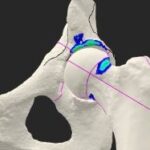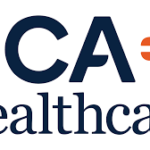
 Silos are breaking down across the health continuum as consumers take the driver’s seat. At the same time, regulatory changes from CMS are speeding up the broader transformation of the U.S. healthcare system.
Silos are breaking down across the health continuum as consumers take the driver’s seat. At the same time, regulatory changes from CMS are speeding up the broader transformation of the U.S. healthcare system.
Here, we break down the latest CMS provider fee schedule changes and what they mean for the broader industry:
2019 Medicare Payment System Updates (per Medicare) % Change Projected $ Increase
Hospital Inpatient Prospective Payment System (IPPS) 1.80% 4.8 Billion
Uncompensated Care Payments to hospitals 18.10% 1.5 Billion
Skilled Nursing Facilities 2.40% 820 Million
Home Health Agencies 2.20% 420 Million
Long Term Acute Care Hospital Prospective Payment System0.90% 39 Million
Ambulatory Surgery Centers 2.10% Not Stated
Hospital Outpatient Prospective Payment System (OPPS) 1.35% Not Stated
Physician Fee Schedule 0.10% Not Stated
The federal government, which controls about half of all U.S. healthcare spending (Medicare and Medicaid programs), has truly become the most innovative “payer” in its efforts to transform healthcare from a fee-for-service system to a value-based one.
Within each provider fee update, we’ve identified some common themes:
1. Patient-centricity
Transparency and Performance Updates
CMS will require hospitals to publish a public list of its standard charges, a first step aimed at providing greater pricing transparency to patients.
CMS has also updated its Nursing Home Compare program available to patients.
CMS has significantly increased data and information available to patients as well as cost and utilization information available to the public.
Prioritizing Patients over Paperwork
CMS announced numerous measures—across provider types—aimed at reducing costs associated with the administrative burdens its programs have adopted over the years. This is new and much needed.
2. Using Technology to Innovate Patient Care
Expanded Telemedicine Reimbursement
CMS continues to expand its reimbursement of non-facilities-based care, in a nod to how technology is transforming healthcare. The agency announced greater compensation for technology-enabled “virtual check-ups” and other telehealth services.
BDO’s Quick Take: True pricing transparency will likely be created through the outlet CMS is upping reimbursement in: technology.
Reading the Regulatory Signs Ahead
In 2019, significant updates are expected that we believe will have a lasting impact on the national dialogue related to health care costs including site neutrality, streamlining documentation and payment changes for physician visits, home care and uncompensated care audits.
Site Neutrality
Controversial in nature because of the historically hospital-centric way the U.S. health system has functioned, CMS is looking to neutralize payments across provider types. This is aimed to make payments fairer between hospitals and other provider types, including changes related to:
• Physician Services: CMS will phase out its additional reimbursement of off-campus designated hospital outpatient centers over three years (70%/40%/0% in 2019-2021). In this manner, CMS will reimburse for these services the same as within the Physician Fee Schedule.
• Ambulatory Surgery Centers vs Hospital Outpatient Surgery Departments: CMS is beginning to reduce the cost differentials between reimbursement of the two.
• Payer Mixes: CMS’s emphasis on payment differentials between sites-of-service will open the door more broadly to other commercial payers and make it increasingly challenging for hospitals to maintain their historic pricing advantages for outpatient services across their payer mixes.
BDO’s Quick Take: To survive, hospitals must transform their traditional assets to serve a model of care that’s centered more on patient convenience—and available at the patient’s fingertips.
Streamlining Documentation & Payment Changes for Physician Visits
CMS has historically had five different reimbursement levels for “office visits,” depending on the complexity of the visit. The agency originally proposed to simplify both the rules and reduce the number of reimbursement levels to two.
CMS announced that it would phase this change in over three years. For most physicians, this is positive step. Coding accuracy for office visits is exceedingly complex, and physician organizations spend an inordinate amount of time complying with existing rules. Physicians will have some additional time for either more direct face-to-face interaction with patients and/or they’ll spend less time completing the coding for patient encounters from the previous day.
Care at Home
The trend away from inpatient care is only going to quicken, and home care is going to explode.
CMS is recognizing new, innovative ways of patient care that don’t require leaving the home, whether that means providers come to them, or they use telehealth services to treat them or even technology-enabled tools like those that enable remote patient-monitoring.
BDO’s Quick Take: By 2020, healthcare organizations say they plan to invest most in home health to prepare for the growth of the aging population. As CMS reimbursement for home health models—and technologies that support them—expands, this trend will quicken.

























